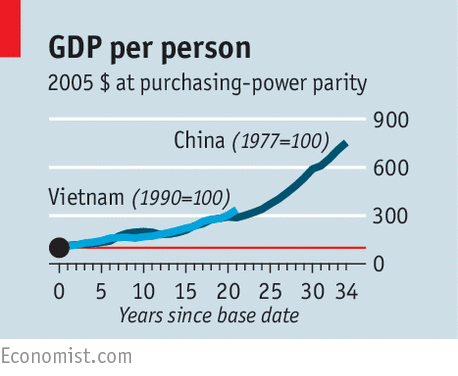|
Sách hiếm - cho đến khi được phổ biến ở các nơi mà "thánh kinh" có mặt. | |||||||||||
|
|
| |||||||||
|
Tìm chữ | |||||||||
|
| |||||||||
| | |||||||||
|
Chủ Trương | |||||||||
| Các đề mục : | |||||||||
» Lưu Trữ Theo Ngày Tháng | |||||||||
| » Các bài về Cải Đạo | |||||||||
| » Các Truyền Nhân Của Chúng Tôi | |||||||||
| » Chữ Quốc Ngữ | |||||||||
| » Hồ sơ CIA giải mật | |||||||||
| » Lạm dụng tình dục | |||||||||
| » GHLM: Lịch Sử và Hồ Sơ Tội Ác | |||||||||
| » Vài Danh Sách Cừu Đen | |||||||||
| » Ý Thức Văn Thân Thế Kỷ 21 | |||||||||
|
| |||||||||
| Các tác giả: | |||||||||
| Bùi Kha | |||||||||
| Charlie Nguyễn | |||||||||
| Hoàng Nguyên Nhuận | |||||||||
| Hoành Linh Đỗ Mậu | |||||||||
| Lý Thái Xuân | |||||||||
| Nguyễn Đắc Xuân | |||||||||
| Nguyễn Mạnh Quang | |||||||||
| Nguyễn Văn Thịnh | |||||||||
| Nguyễn Văn Thọ | |||||||||
| Thiên Lôi | |||||||||
| Trần Chung Ngọc | |||||||||
| Trần Tiên Long | |||||||||
| Trần Trọng Sỹ | |||||||||
| Các tác giả thân hữu | |||||||||
| |||||||||
| |||||||||
|
| |||||||||
|
Các trang bạn | |||||||||
|
▬ Các kênh Youtubes: ▬ Các Facebooks: ▬ Các websites: | |||||||||
|
website hit counter
|
The other Asian tiger - Một con hổ Châu Á nữa!
Subject: The_Economist_:_(Việt_Nam)_C on_hổ_châu_Á_n ữa_đây_này_!!!
From: Mike Wilson
Date: Thu, August 04, 2016 3:36 pm
Sau chiến tranh, trong thập kỉ 1980 VN nghèo ngang Ethopia !
Kể từ khi kinh tế vươn lên GDP tính trên đầu người (GDP per person) của VN tăng tiến giống y như của TQ !!!
Về giáo dục VN đang tiến xa hơn Thái, Malaysia và Indonesia - dù 3 nước này đang giàu hơn VN !!!
Nếu TPP được Quốc Hội My~ phê chuẩn, VN sẽ có lợi nhất về xuất khẩu và tăng trưởng kinh tế !
nth-fl
________________
https://www.economist.com/news/leaders/21703368-vietnams-success-merits-closer-look-other-asian-tiger
The other Asian tiger -
Vietnam’s success merits a closer look

Biểu đồ cho thấy, tính từ khởi điểm kinh tế vươn lên,
GDP - tính trên mỗi người VN - tăng tiến cùng nhịp, giống y như TQ !!!
Vietnam, with a population of more than 90m, has notched up the world’s second-fastest growth rate per person since 1990, behind only China. If it can maintain a 7% pace over the next decade, it will follow the same trajectory as erstwhile Asian tigers such as South Korea and Taiwan. Quite an achievement for a country that in the 1980s was emerging from decades of war and (VN) was as poor as Ethiopia (see article).
Most obviously, openness to the global economy pays off. Vietnam is lucky to be sitting on China’s doorstep as companies hunt for low-cost alternatives. But others in South-East Asia, equally well positioned, have done less. Vietnam dramatically simplified its trade rules in the 1990s. Trade now accounts for roughly 150% of GDP, more than any other country at its income level. The government barred officials from forcing foreigners to buy inputs domestically. Contrast that with local-content rules in Indonesia. Foreign firms have flocked to Vietnam and make about two-thirds of Vietnamese exports.
Allied to openness is flexibility. The government has encouraged competition among its 63 provinces. Ho Chi Minh City has forged ahead with industrial parks, Danang has gone high-tech and the north is scooping up manufacturers as they exit China. The result is a diversified economy able to withstand shocks, including a property bust in 2011.
At the same time Vietnam, like China, has been clear-minded about the direction it must take. Perhaps most important has been a focus on education. Vietnamese 15-year-olds do as well in maths and sciences as their German peers. Vietnam spends more on schools than most countries at a similar level of development, and focuses on the basics: boosting enrolment and training teachers. The investment is pivotal to making the most of trade opportunities. Factories may be more automated, but the machines still need operators. Workers must be literate, numerate and able to handle complex instructions. Vietnam is producing the right skills. Thailand, Indonesia and Malaysia lag behind, despite being wealthier.
Mekong, (Thailand, Laos, Cambodia), you follow (VN)
Now a middle-income country, Vietnam faces a steep ascent to the high-income ranks. The Trans-Pacific Partnership, a 12-nation trade pact meant to be a boost, may well be blocked by America’s inward turn. State-owned enterprises (SOEs) are bloated. Competing provinces, long a benefit, are a liability when they duplicate infrastructure. Vietnam has struggled to build a domestic supply chain. Moving up in value will be hard when China’s grip on high-end output is tightening. The repressive, one-party system of government is brittle.
But Vietnam’s past quarter-century means that it has a decent chance of prevailing. It is at last starting on SOE reform. It is negotiating trade deals in Asia and with Europe. And it is drafting plans to increase its domestic share of manufacturing without scaring off foreigners. Vietnam is a model for countries trying to get a foot on the development ladder. With luck, it will also become a model for those trying to climb up it.
| Đó đây |
|
2025-11-07 - Sự cần thiết phải có Luật bảo vệ sự thật lịch sử - hiện nay, các thế lực thù địch, phản động, lực lượng cơ hội trong nước đã triệt để lợi dụng sự phát triển của mạng lưới truyền thông, nhất là trên không gian mạng để xuyên tạc,
2025-11-07 - Tỉnh táo trước các hành vi xét lại lịch sử nhằm phủ nhận quá khứ - Với cái gọi là nhân danh “đổi mới”, “nhận thức lại”, “tiếp cận lại”, hay “xem xét khách quan”, “cách tiếp cận mới”, “hòa hợp, hòa giải”, họ cố tình tạo ra các tranh cãi
2025-11-03 - Nên dừng tranh cãi chuyện Tả quân Lê Văn Duyệt - 2025-11-03 - Thì Ra Chính Công Giáo Cổ Động Nhớ Ơn Lê Văn Duyệt - 2025-11-03 - Lịch Sử Là Khoa Học, Không Thể Dựa Theo Niềm Tin Tín Ngưỡng Dân Gian - 2025-10-29 - Phái đoàn BT BCTr Mỹ sắp thăm VN-Mã-Hàn-Nhật an ninh hàng hải Biển Đông-Tt HQ Hùng Cao - 2025-10-24 - Bức Tượng Bán Nước Từng Dựng Trước Nhà Thờ Đức Bà SG - 2025-10-22 - Bolsa bem nhau!NNL: Hậu duệ VNCH THUA hậu M ôn CS! VNCH là tay sai! Ăn bám Mỹ! Trốn lính ?Chửi om ! - 2025-10-19 - Hơn 2.500 cuộc biểu tình phản đối TT Donald Trump được lên kế hoạch vào thứ Bảy 18/10/2025 - trên tất cả 50 tiểu bang trong vòng thứ hai của cuộc biểu tình "No Kings", nhằm mục đích bác bỏ rộng rãi những gì mà ban tổ chức mô tả là chương trình nghị sự "độc đoán" của Trump.
2025-10-19 - Hàng triệu người biểu tình phản đối Trump tại các cuộc biểu tình "Không có Vua" trên khắp nước Mỹ, - những người tổ chức cho biết. Đây là lý do tại sao những người biểu tình nói rằng họ đã tham dự.
|
Trang Sách Hiếm
| ©2012 |

 bóp méo, phủ nhận lịch sử dân tộc, lịch sử cách mạng
bóp méo, phủ nhận lịch sử dân tộc, lịch sử cách mạng để làm phân tán dư luận, tạo ra hai luồng tư tưởng đối nghịch trong xã hội
để làm phân tán dư luận, tạo ra hai luồng tư tưởng đối nghịch trong xã hội
